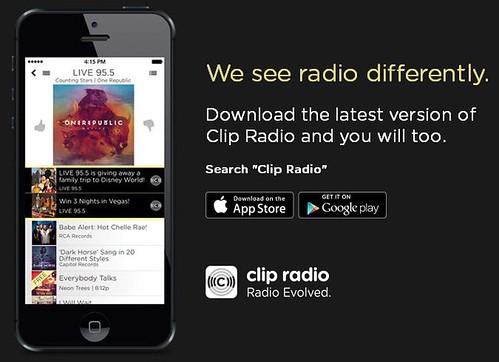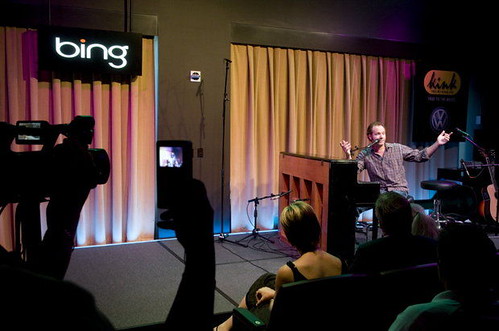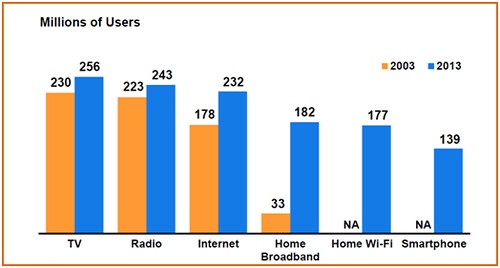 Sirius/XM satellite Radio with 25M paid subscribers, is getting beaten up by Pandora’s 60 million listeners while AM radios are becoming artifacts. But radio may be coming back – on phones.
Sirius/XM satellite Radio with 25M paid subscribers, is getting beaten up by Pandora’s 60 million listeners while AM radios are becoming artifacts. But radio may be coming back – on phones.
Clip Interactive is a new mobile application that’s available on Android and iOS that allows everything that you hear over terrestrial radio to be interactive for the listener.
 You listen, hit the Clip button on their application, and connect with whatever content is playing on the radio: Music, contents, promotions, advertising, and spoken-word content.
You listen, hit the Clip button on their application, and connect with whatever content is playing on the radio: Music, contents, promotions, advertising, and spoken-word content.
Portland is the first city where Clip Radio has fully integrated nearly every radio station broadcast, and the company plans to introduce the app to several other markets over the coming months.
Mark Ramsey, a media stategist, has a good interview with Bill Freund, Clip’s Chief Revenue Officer.
Clip brings Shazam’s music recognizing capability to the broadcaster. It makes local radio interactive and attributable and brings the scale of the 240 million people who listen to the radio.
The Android and IOS app allows Portland radio listeners to:
- Detect almost any radio station in Portland
- View what has broadcast in the last hour (including songs, ads, contests, promotions and more)
- “Clip” to save what you want
- Interact with content (enter contents, redeem offers, download songs, etc.)
Clip is partnered with Alpha Broadcasting, which has 6 stations in Portland and Salem Broadcasting giving them ten partner stations who promote the Clip app or promote their station app with Clip capabilities.
For advertisers, Clip Radio insists that it can provide better ad tracking and more accurate listener numbers. For music labels it says the Clip Radio app can “increase listener engagement, sell tickets, solicit fan opinions, drive interaction with artists via Facebook, Twitter, YouTube and other social media networks.
Of course Pandora allows users to stream music and build virtual stations based on format and/or a particular song. The Pandora media player, which incorporates hundreds of different “musical attributes” and “focus traits” is based on OpenLaszlo.
Apple’s iTunes Radio, unveiled at the 2013 WWDC, has similar features but is built directly into the iOS 7 Music app.
HD Radio is the trademark for iBiquity’s in-band on-channel (IBOC) digital radio technology used by AM and FM radio stations, using a digital signal embedded “on-frequency” immediately above and below a station’s standard analog signal.
Artist Experience allows broadcasters to embed album art, station logos and other graphic content. It’s incorporated into the digital bit stream and displayed on compatible receivers with screens.
Artist Experience is like a slide show, synched to the radio stream, displaying album art and advertising. Jump2Go and Emmis TagStation have products that insert the AE content, which is multiplexed along with the HD audio signal.
The NextRadio app works in conjunction with the Emmis’ TagStation middleware, where the audio feed is synched with visual elements. Sprint gets a portion of this ad revenue since the radio service is free and off the air.
The NAB really blew the development of Digital FM radio. Mandatory digital FM tuners in cellphones would have made a huge difference for both listeners and broadcasters. But cellular operators would rather take the tuners out of phones and force you to pay for data.
See: Radio Station Tour, TWIT: This Week in Radio Tech, World Radio Day, Digital FM Comes to Smartphones.
Posted on Thu, 08 May 2014 21:29:19 +0000 at http://www.dailywireless.org/2014/05/08/...artphones/
Comments: http://www.dailywireless.org/2014/05/08/.../#comments



